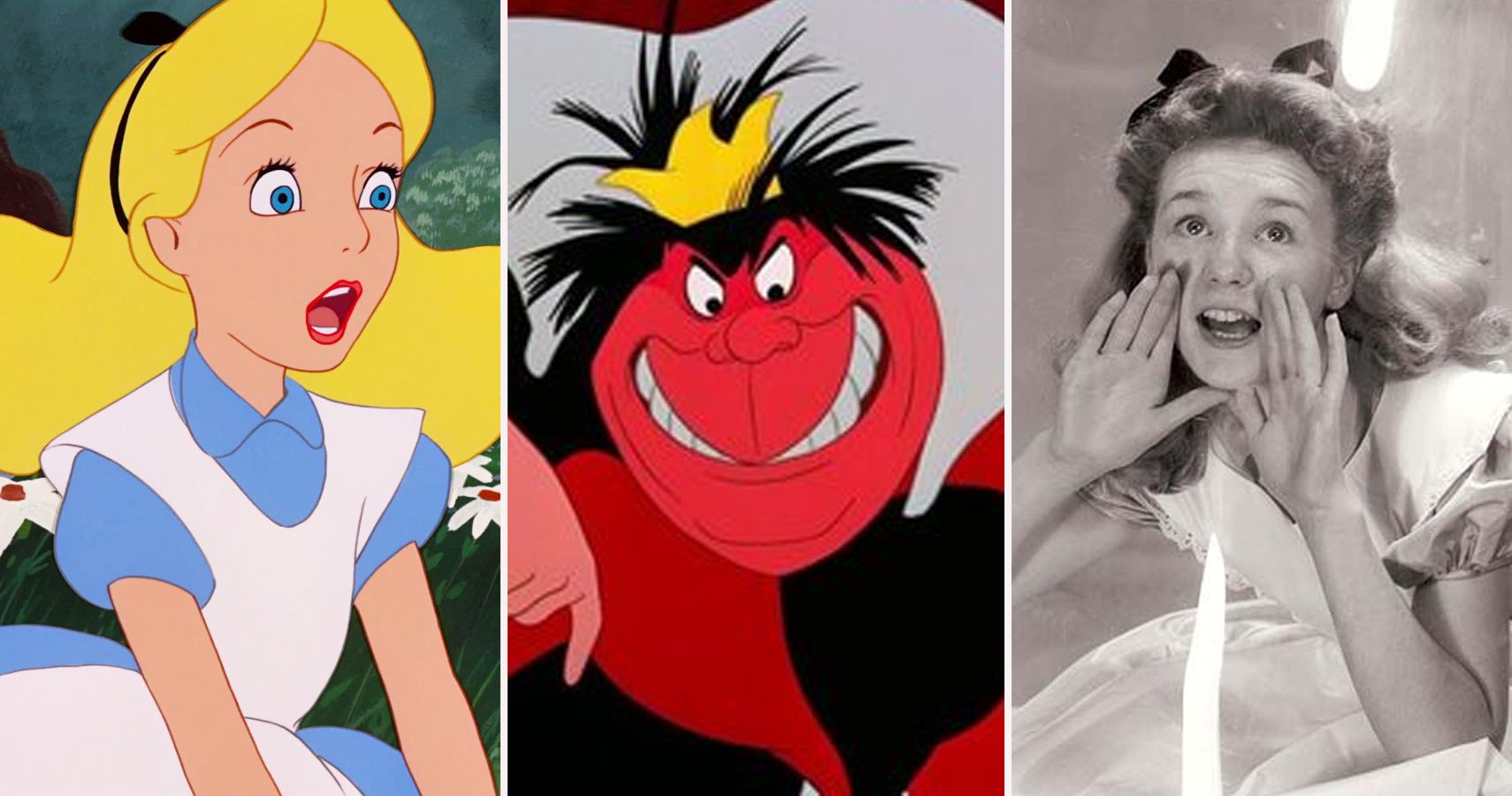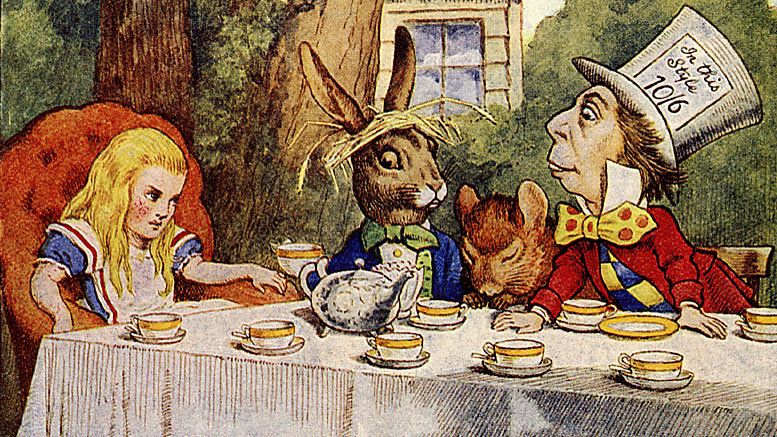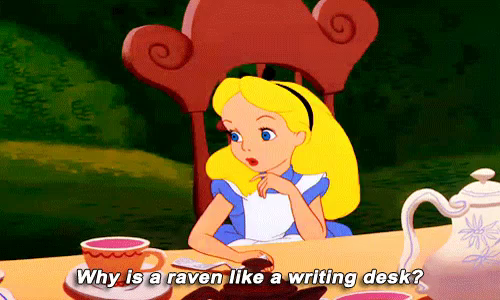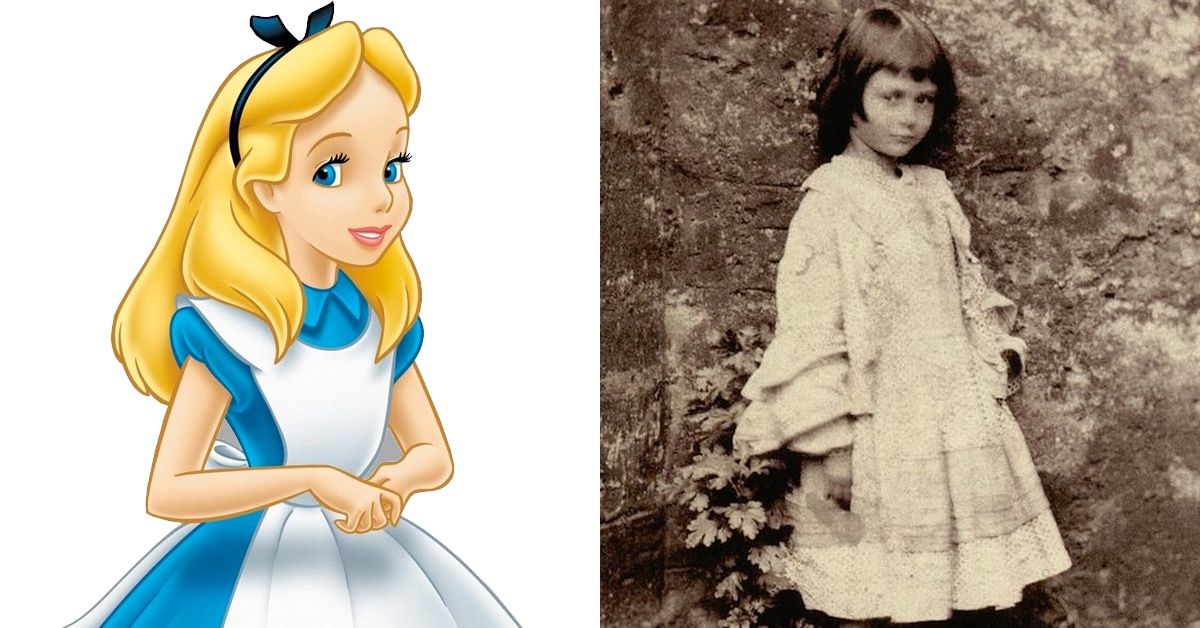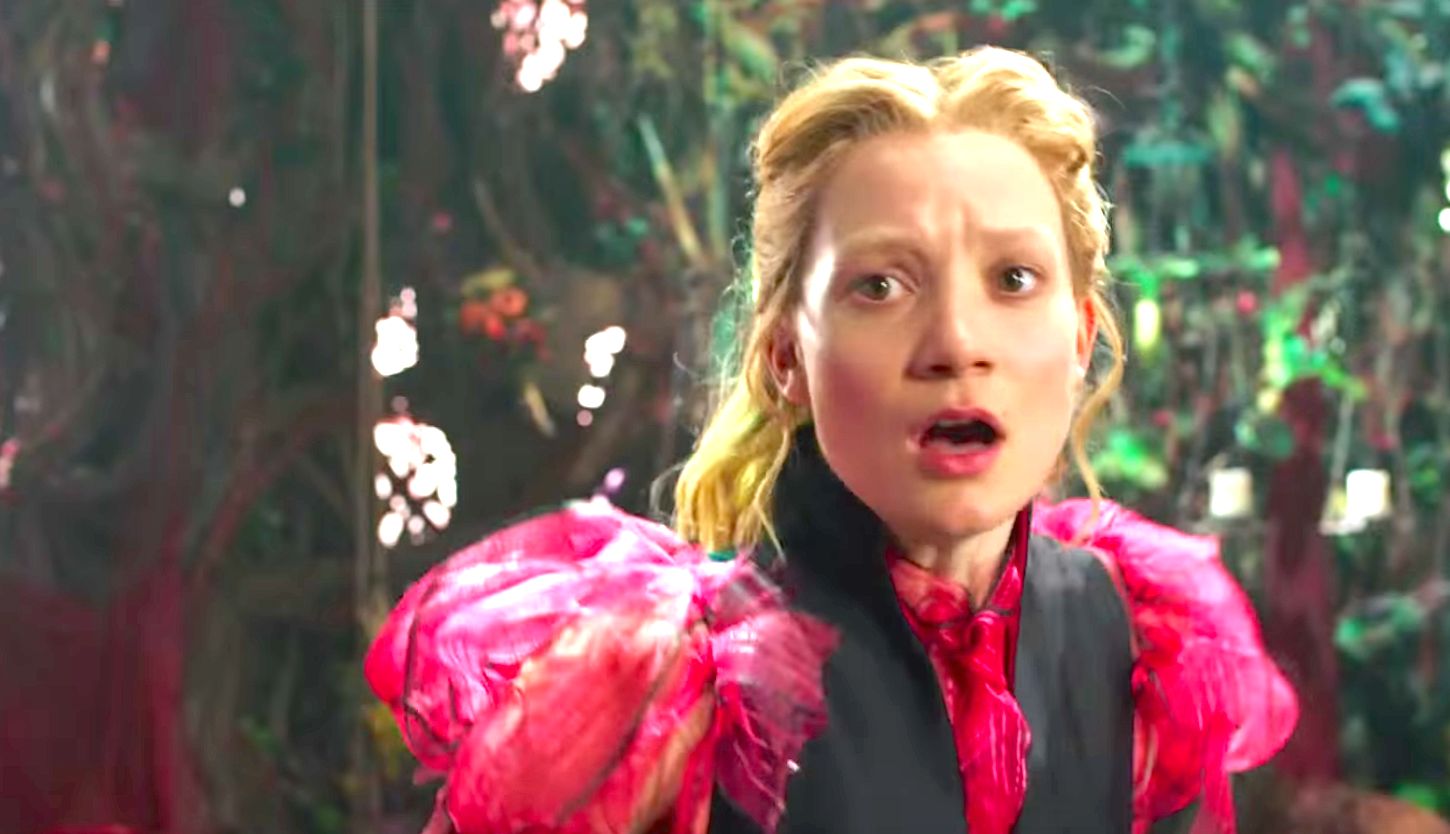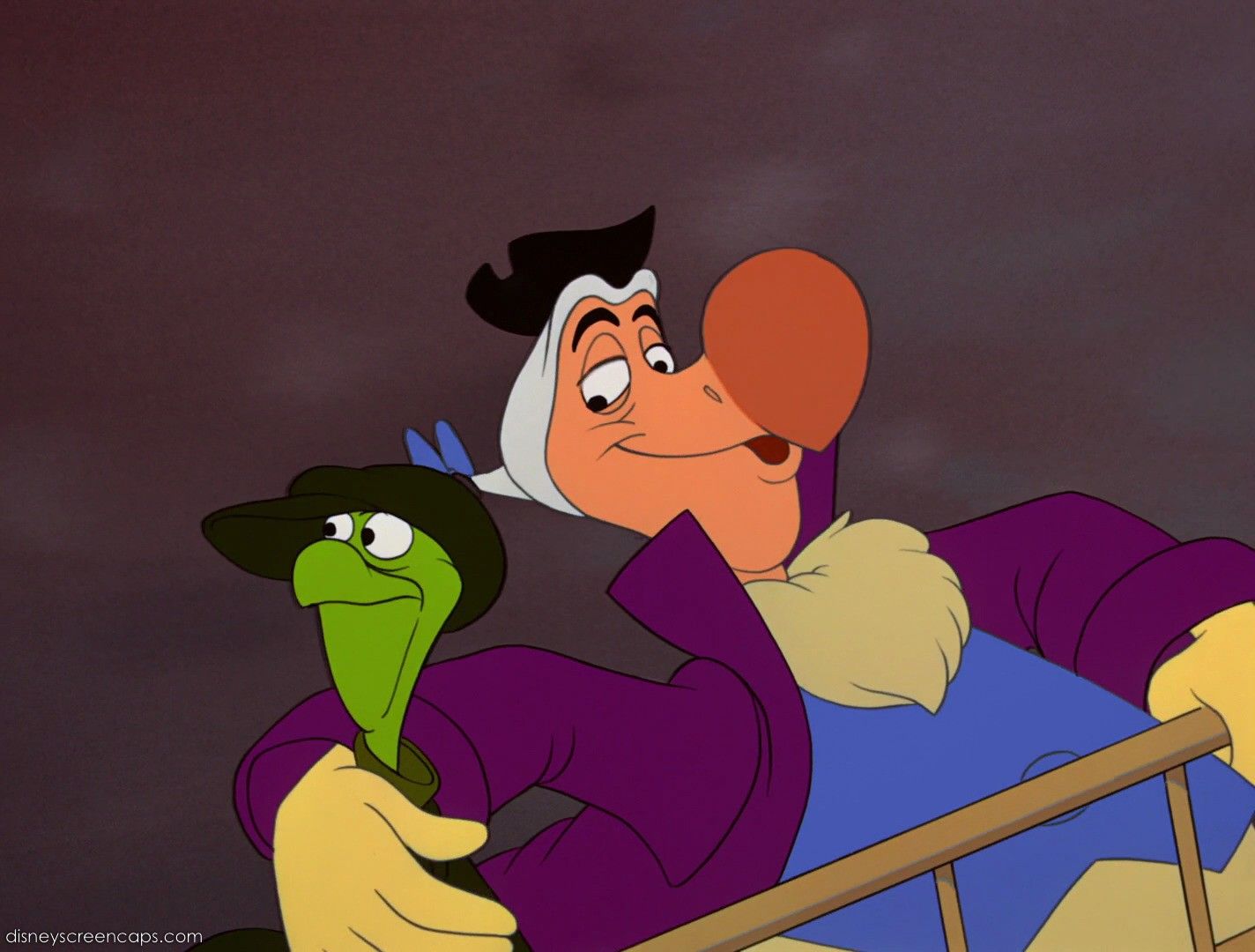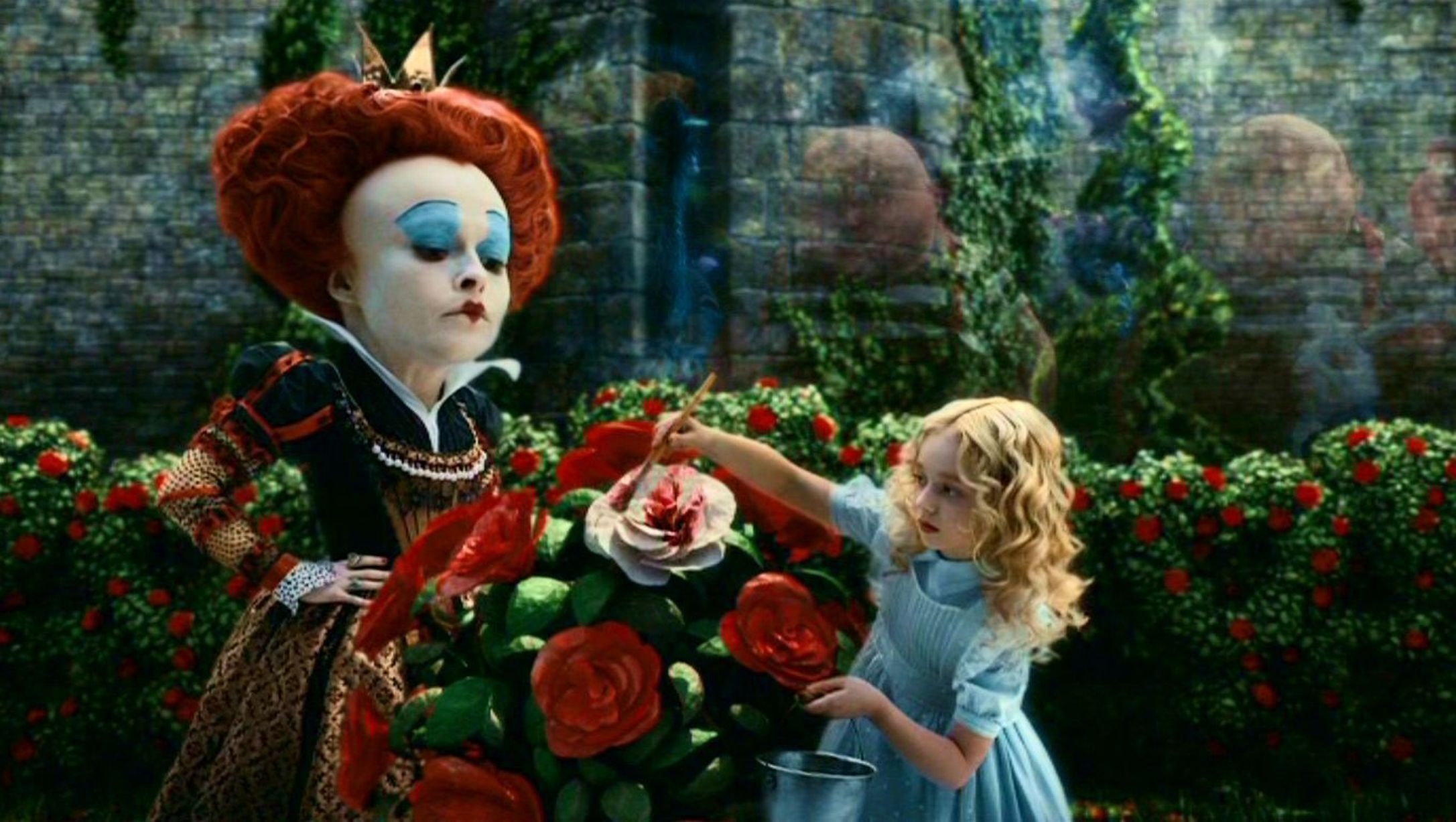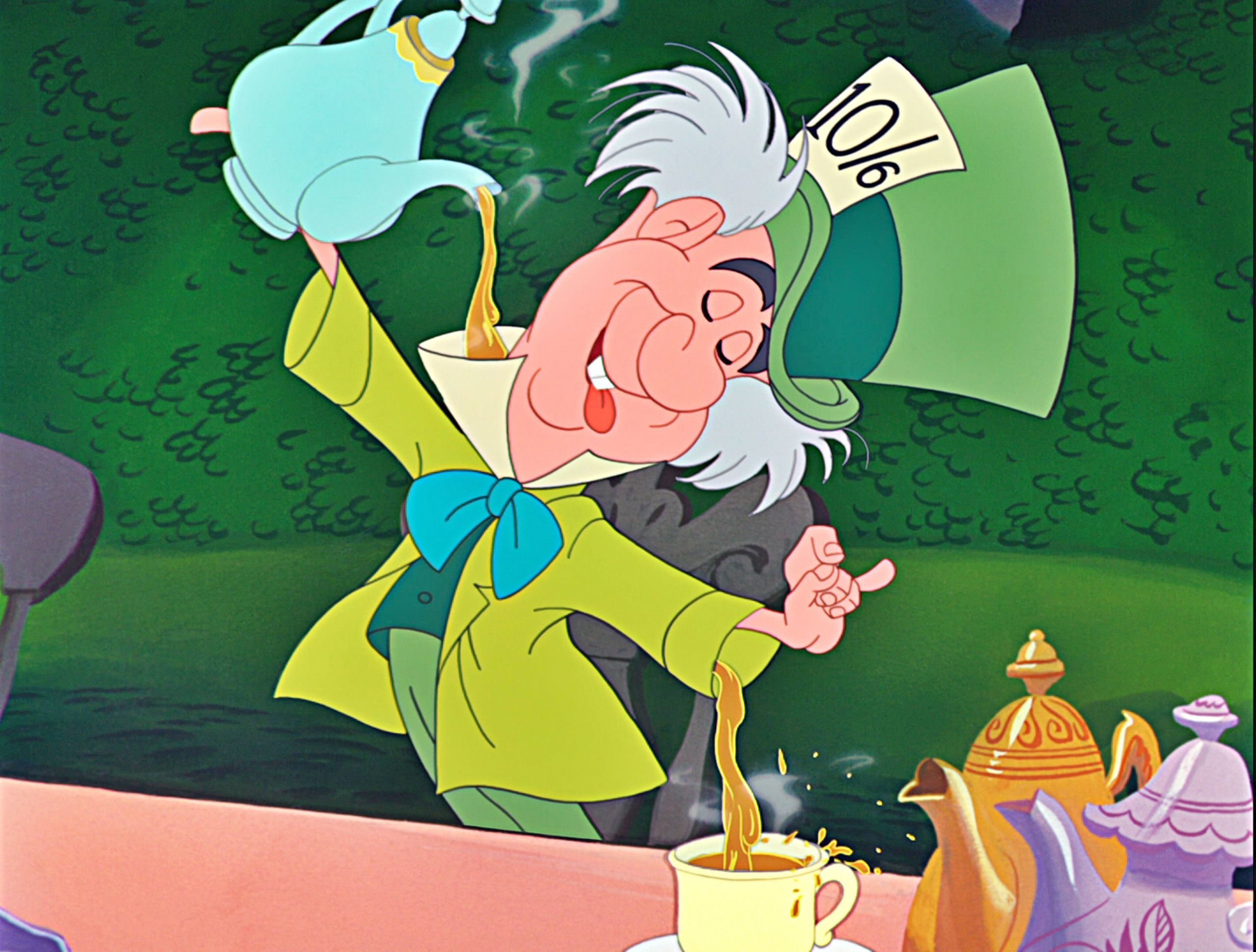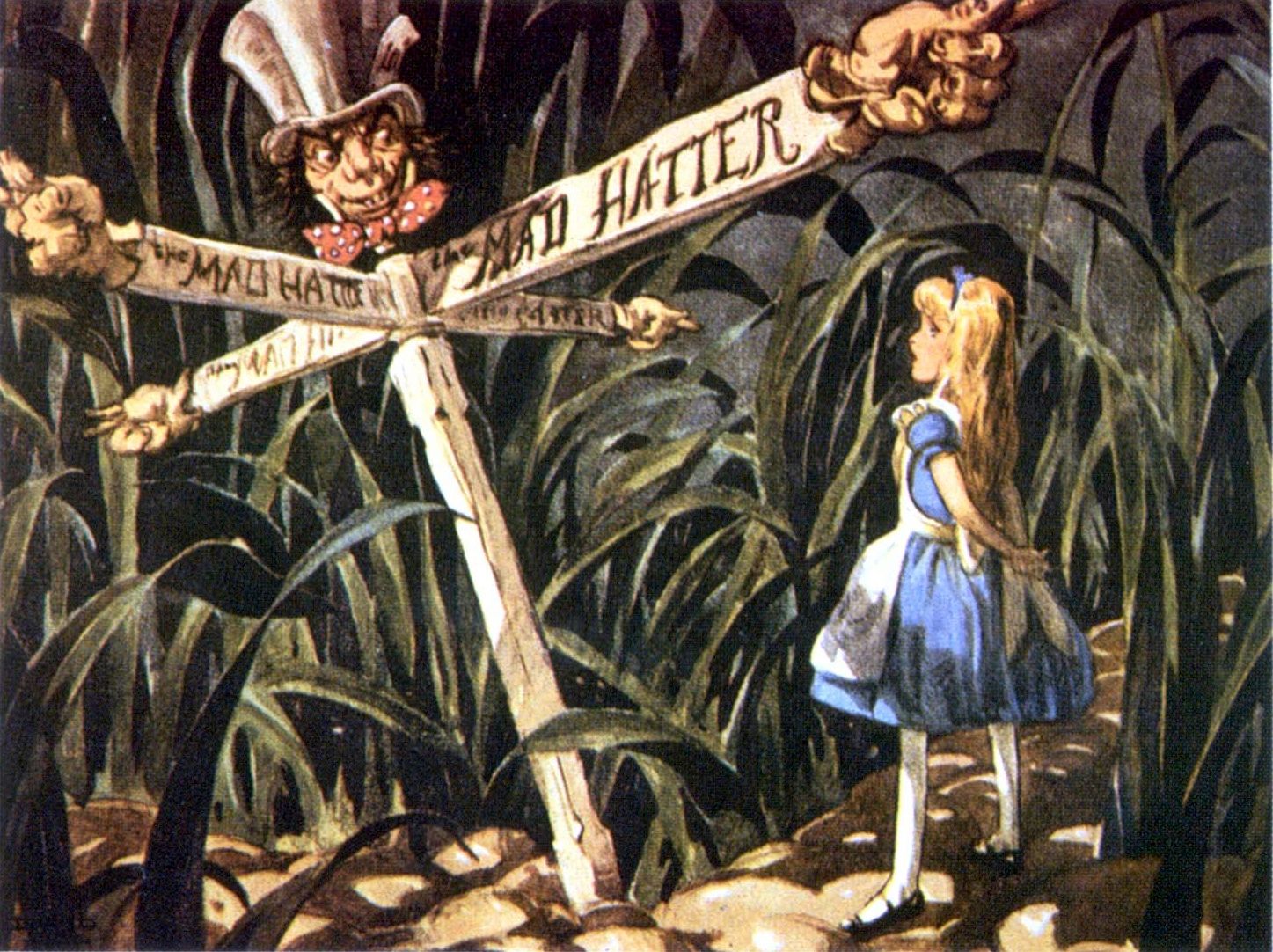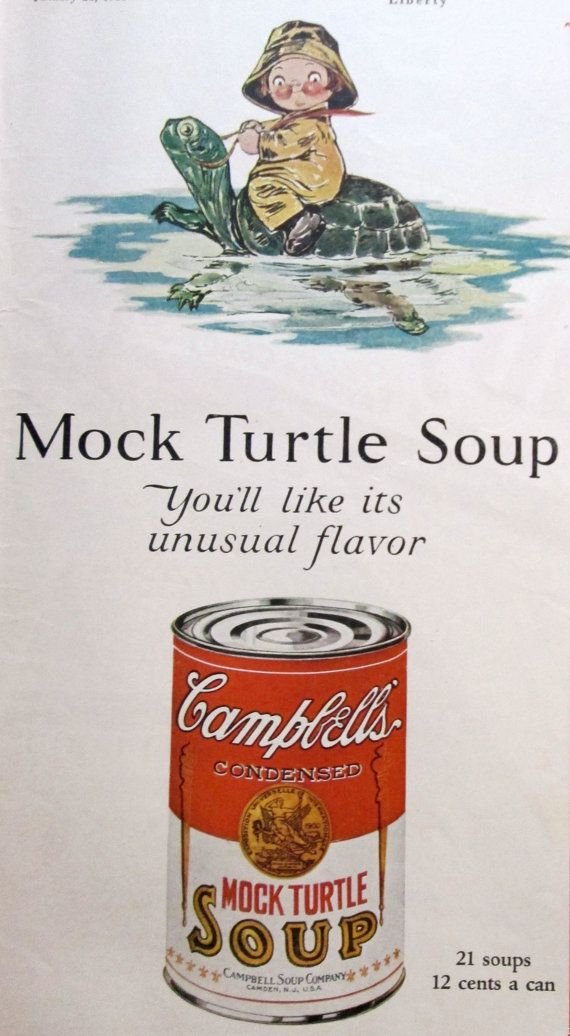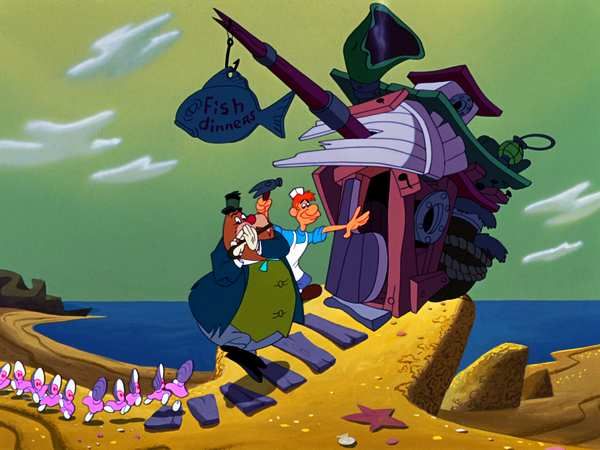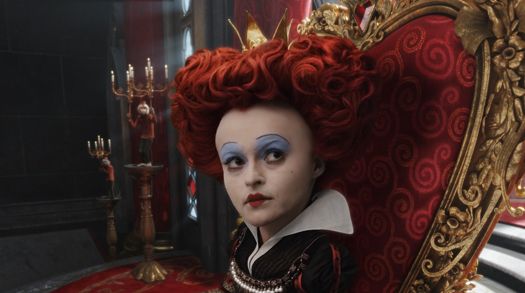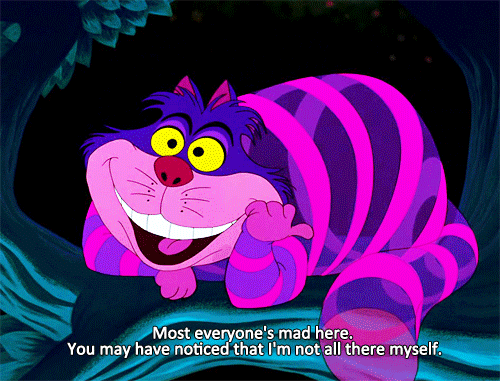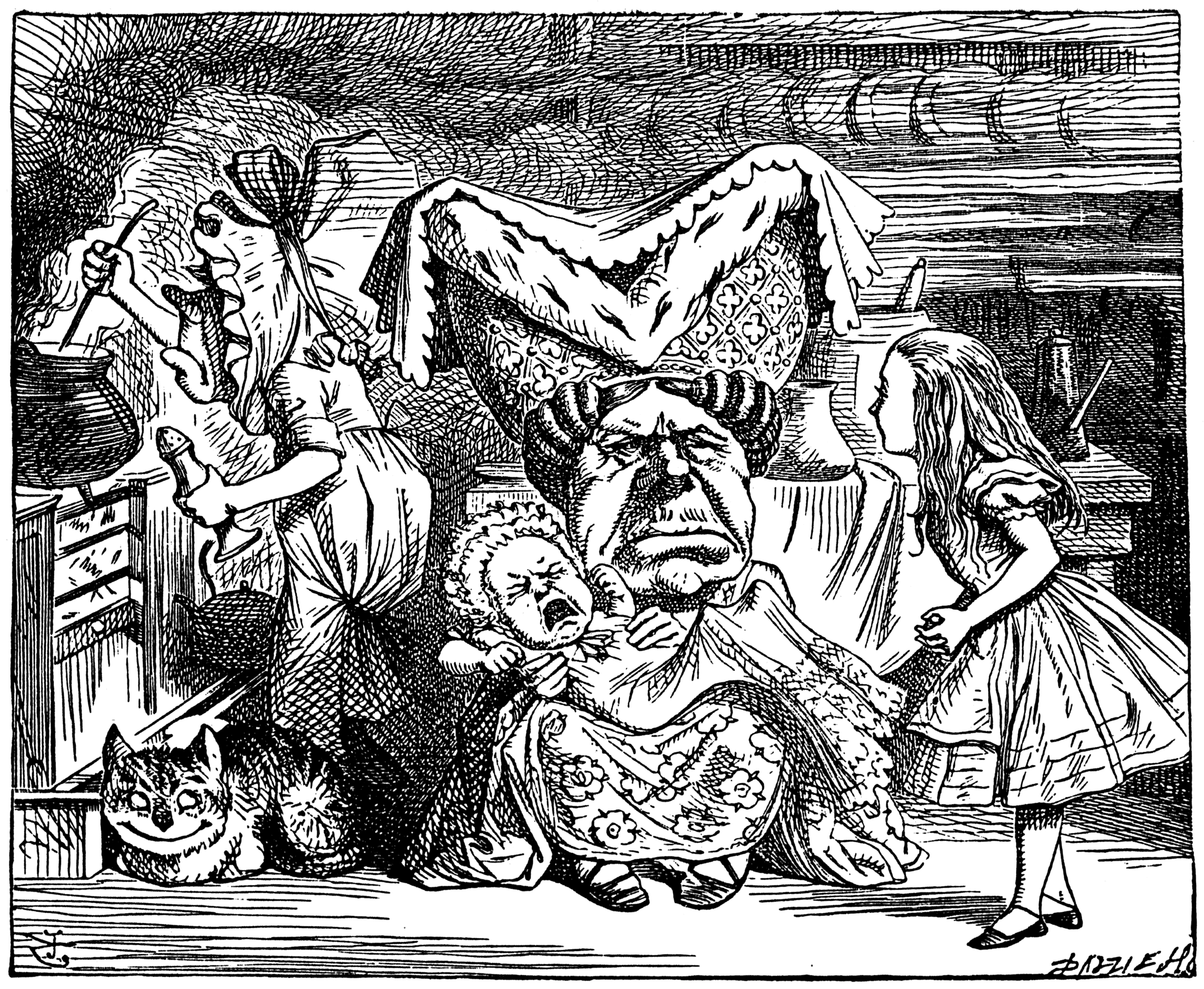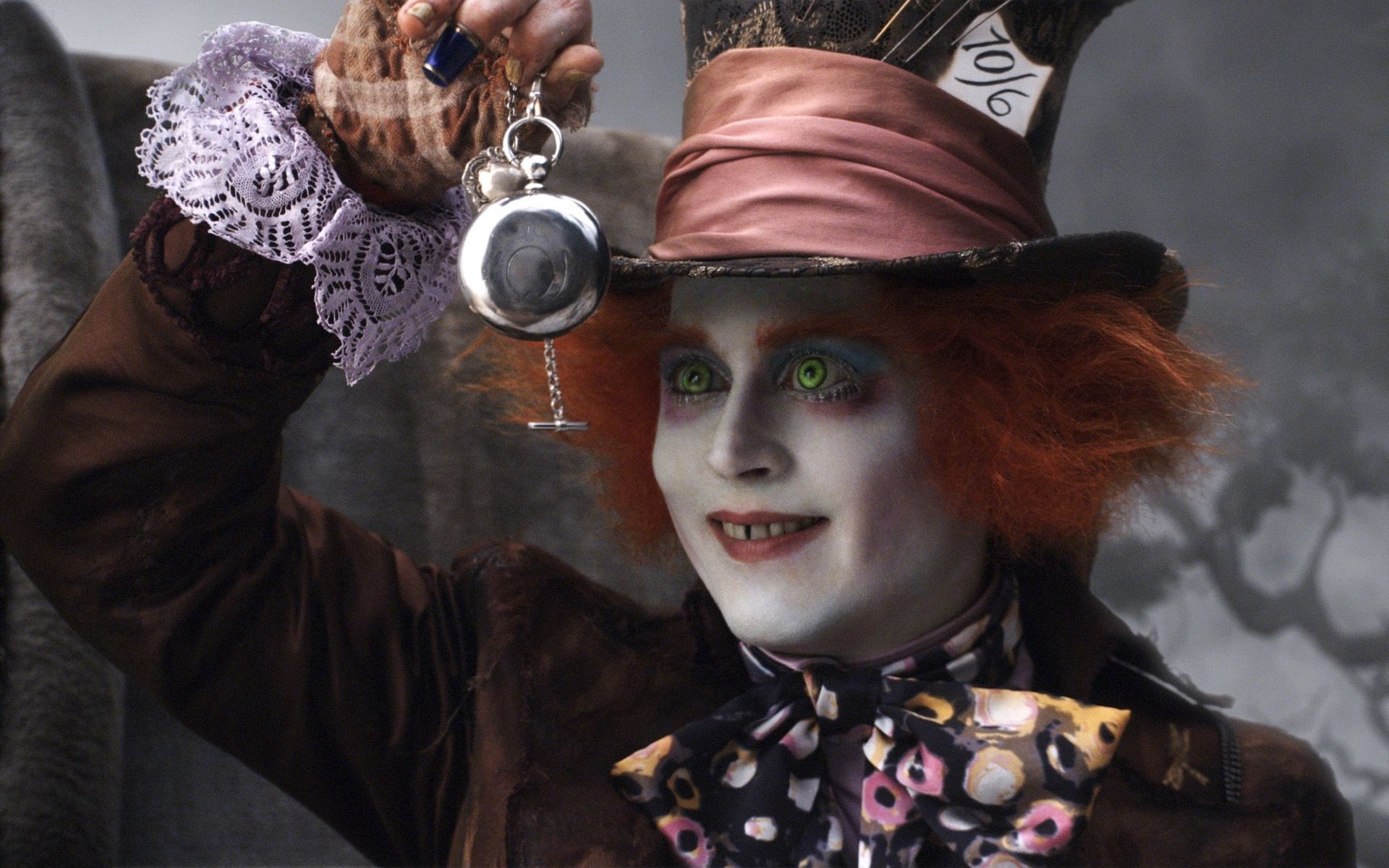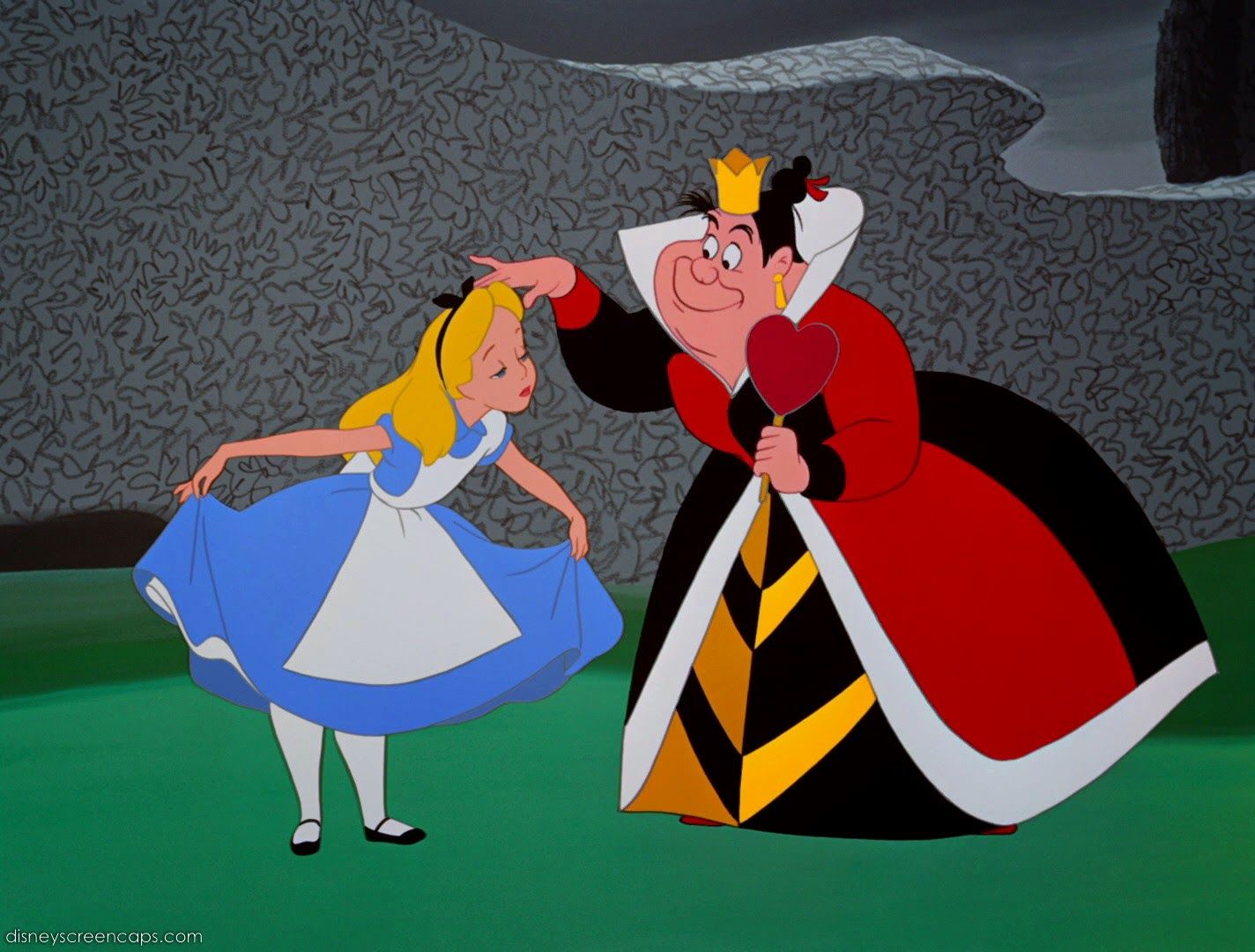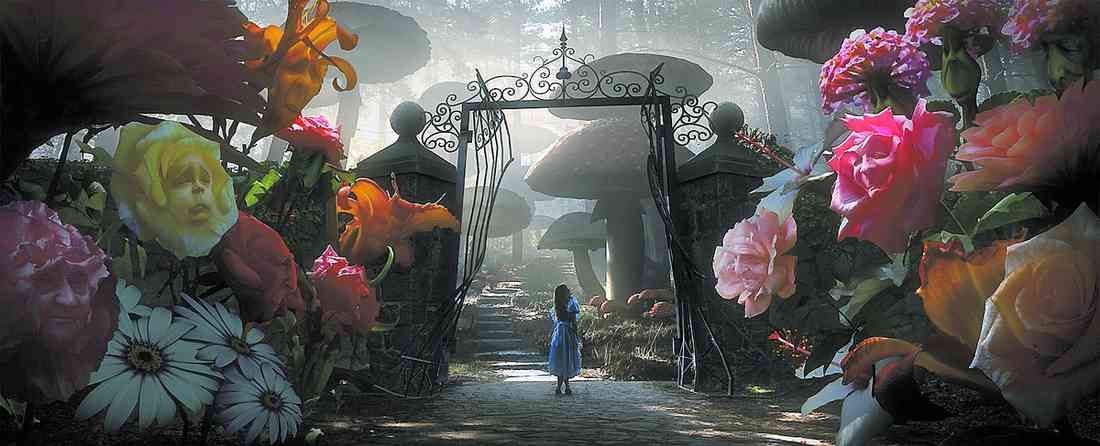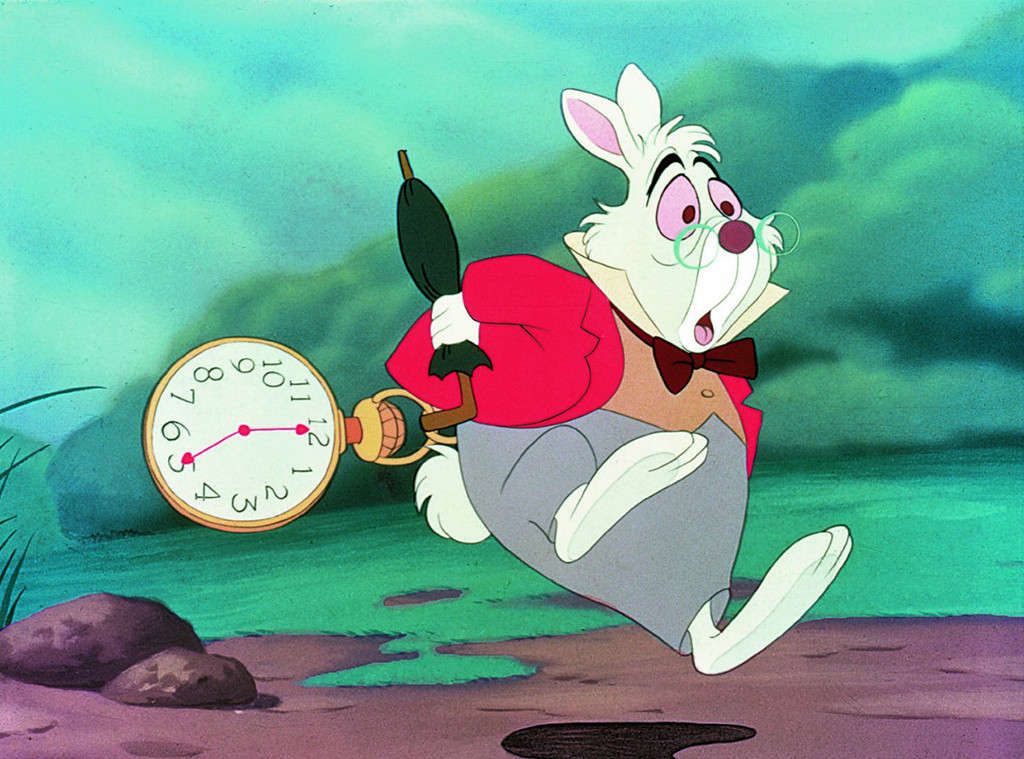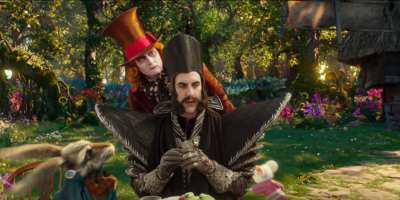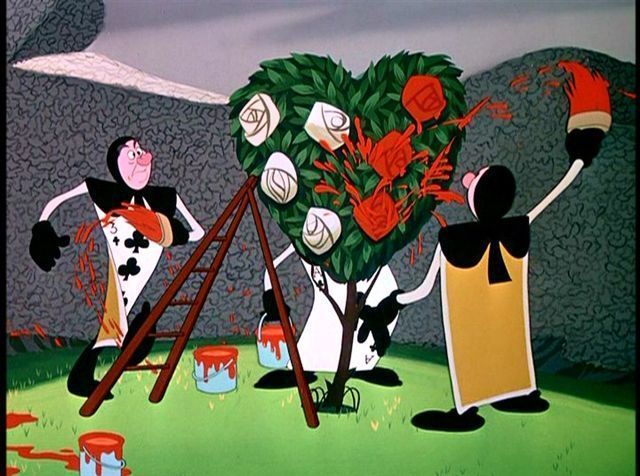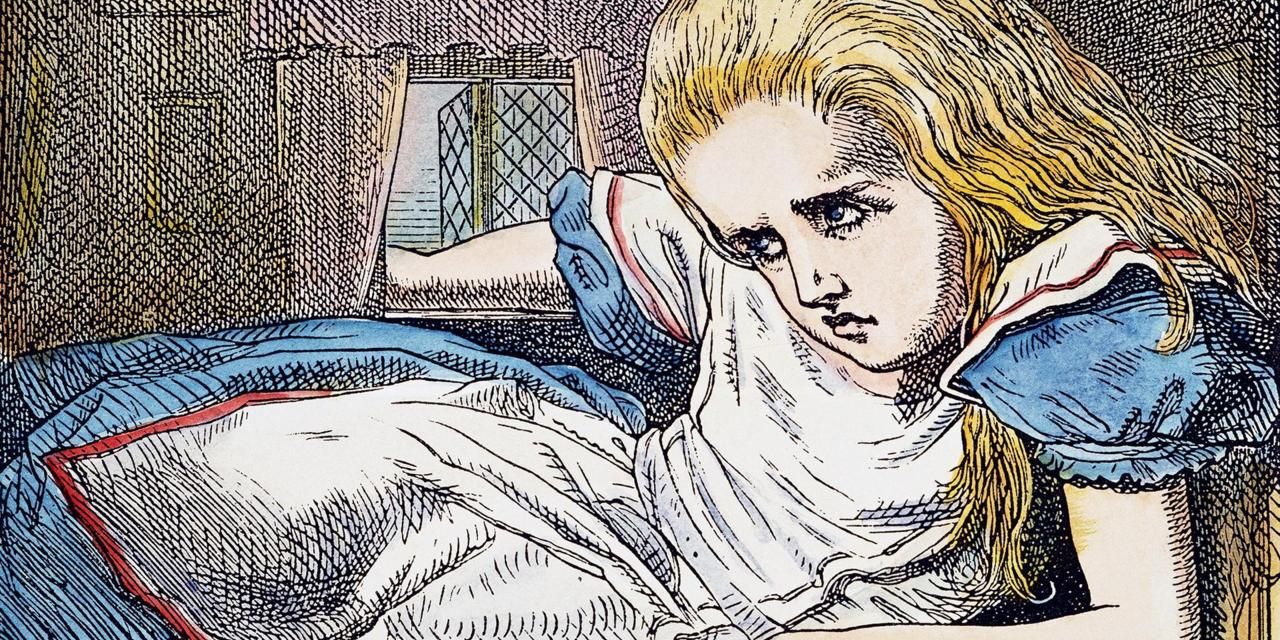I will do my best to contain my excitement as I craft this introduction; however, Alice in Wonderland is one of the most important pieces of media in my entire life. And, try as I might, I don’t think I will be able to contain myself. In fact, one of the greatest days of my young life was the day in which Lewis Carroll’s great-great (I am not sure how many greats there were) granddaughter came into my place of work and we engaged in a lengthy, Alice-themed conversation. Lewis Carroll’s (note: we will be using his pen name throughout this article) classic series follows the adventures of a little curious girl named Alice through the mysterious place that is Wonderland.
Alice’s Adventures in Wonderland has delighted, angered, and confused audiences all around the world for ages. From being declared a box office failure to being banned in China, Alice’s adventures have been through a lot since the novels were originally published. But there is also a lot of misinformation that has been spread about the series. Are the books truly a metaphor for substances or illness? Is Alice truly in a coma rather than just experiencing a fantastical world? And why IS a raven like a writing desk? The answers to these questions (as well as many others) lie within the 25 points on this list.
So, without further ado, here are 25 things that you probably didn’t know about Alice Liddell and her adventures in Wonderland.
25 Not What People Expect
No, Alice isn’t an allegory for the ingestion of mind-altering substances or a metaphor for mental illness, or whatever other edgy theory your older brother told you. The true inspiration behind Alice’s adventures is a lot less titillating than these other salacious theories that have been floating around the interwebs for years. The true inspiration for the tale came from two sources in Carroll’s life. The first source (which will be expanded later in this article) stemmed from an afternoon of babysitting and storytelling between Carroll and his friend, Henry Liddell’s three daughters.
The second source of inspiration was Carroll’s intense hatred of 19th-century innovations in mathematics (including the advent of imaginary numbers.) The riddles that the Mad Hatter, the caterpillar, and Alice recite throughout the novel were supposed to act as a reflection on the increasing abstraction that dominated mathematics in Victorian England. So there you go, these stories were not the product of a trip through illness or a romp with substances but rather a story-loving man’s math focus rage. Though the true meaning behind the series is nowhere as tantalizing as your older brother once made it seem, I personally feel as though that the true inspiration behind the series is far more entertaining.
24 Why IS A Raven Like A Writing Desk?
Ah, the question to end all questions. Why IS a raven like a writing desk? Do you have any theories? I’ve always thought that they both had that Gothic aesthetic and tend to go hand in hand. But what answer does Carroll provide for the riddle that has plagued us for decades? Well, in short, he doesn’t. It turns out that there is no answer to this riddle. The fact that this riddle has no answer was referenced in Tim Burton’s 2010 live-action adaptation when Alice finally asks the Mad Hatter for the answer to the riddle and he reveals that he has no idea.
Lewis Carroll made the riddle up for the novel but never thought of an answer to go with it. However, after being harassed by fans for decades, Carroll eventually supplied readers with an answer that was nearly as nonsensical as the original riddle itself. His answer read “Because it can produce a few notes, tho they are VERY flat; and it is nevar put with the wrong end in front.” Carroll intentionally spelt never as “nevar” in his answer in order to create the word “raven” spelt backwards (though his “spelling mistake” has irritated fans all over the world). Other attempts to solve the riddle include the fact that they both start with an “r” sound and that “Edgar Allan Poe wrote on both.”
23 Nonsensical Reality
Though many people have emphasized the nonsensical and trippy notion of the series, it was often noted that the true Alice would have found nothing strange about the story.
The real Alice was a little girl who bore the same name as her fictional counterpart.
The real Alice was one of Henry Liddell’s three daughters who Carroll often delighted by entertaining them with stories that he had invented. A museum exhibit on the famed series (whose exhibit can be explored online) has revealed that many of the elements of the novels' plot and the minor characters that felt absurd and nonsensical to the audience we actually inspired by real people, places, and experiences, that each and every one of the Liddell girls would have recognized from their own lives. For example, when the Mock Turtle explains that he receives lessons in drawing, sketching, and “fainting in coils” from an “old conger-eel that used to come once a week,” the three Liddell girls would have seen their own art tutor in that turtle.
Even though these minor details of the novel did not translate to the novels wider audience, I’d like to think that every single one of those three little Liddell girls that read the finalized novel saw themselves and their lives in its pages. I hope that they smiled and felt like the three most special girls in the entire world. How wonderful is it for Carroll to immortalize them and their lives like that?
22 A Classic For The Ages
I was not exaggerating when I said that the Alice novels are some of the most universally loved novels of all time. In fact, since the books were originally published in 1865 they have never spent a single moment out of print. In fact, the original book in the series has been translated into over 176 languages. The sequel to the original novel, Through the Looking Glass, sold out seven weeks after it was published. If I had been alive during the nineteenth century, I could have probably claimed responsibility for the novels unparalleled sales due to the fact that I own multiple copies of each book within the series. In all honesty, nothing makes me more proud of Carroll than the fact that his books sold so well.
Getting your own work out there and putting it into the world is always such a gamble and seeing such a unique and risky piece of media paying off for an author is always an exciting moment for everyone involved. I, for one, am grateful that he took that gamble and thrust his work out there into the world because, if he hadn’t, we would not have had this amazing story that has shaped the lives of millions of people across the world for the past century or two. And that would have been a tragedy. I can't even imagine my life without Alice Liddell.
21 Stranger Than Fiction
It seems as though it is impossible for an author to create a piece of fiction without putting a bit of themselves in it. Most people tend to place shades of themselves in their main characters; however, Carroll, the creative and unique man that he is, decided to take a different approach.
It turns out that the character of the Dodo which exists in the Alice novels is based on none other than Lewis Carroll himself.
In the original novel, Carroll describes a boating trip which occurred in his own life in 1862 which existed (in a way) within the novel with a few minor adjustments. Though it is important to note that all of the people present were presented in the story as birds rather than people, with Carroll taking the role of the Dodo (a character which was inspired by his real name). It turns out that Carroll had a bit of a stutter which caused him to pronounce his legal last name as “Do-do-dogson” rather than simply “Dogson.” In all honesty, though it was relatively obvious that the author did not base the main character of this series around any aspect of himself, I truly did not expect that I would find him resting behind the mask of an extinct bird.
20 What's In A Name?
Though it is very common to make changes during the adaptation process, Tim Burton made one change between the original source material and his version of events. In Lewis Carroll’s original tale, very few characters and objects were given proper names. The cake that Alice eats was simply cake and the animals were simply referred to as what they were (examples include The White Rabbit, The Mock Turtle, and The Dormouse.) However, Burton decided to provide every object and character that existed within Underland with a proper name. These names include Tarrant Hightopp (The Mad Hatter), McTwisp (The White Rabbit), and Malyumkin (The Dormouse). Other names include Thackery (The March Hare), Absolem (The Caterpillar), Chessur (The Cheshire Cat), Mirana and Iracebeth Crimms (The White and Red Queen respectively), and Ilosovic Stayne (The Knave of Hearts).
Some objects that received names in Burton’s version of events are the cake that makes Alice grow (which is now called Upelkuchen) and the liquid that makes her shrink (Pishalver). And I have to say that I absolutely love the names Burton has gifted us with. I think that providing the creatures and objects of Underland with proper names truly enhances the lore of the universe.
19 The Glory Of Ed Wynn
Ah, Ed Wynn. One of the most famous voice actors of all time and the impression that literally everybody tries to do every time that they rewatch the 1951 animated version of Alice in Wonderland.
Apparently, Wynn’s talents extend beyond that of voice acting as many of his most famous moments from the final cut of the film were ad-libbed.
These ad-libbed moments took place during the live-action reference filming process (which will be expanded upon later in this list). During one take, Wynn ad-libbed a scene in which he attempted to fix The White Rabbit's watch and mocked another characters' suggestion to use mustard as a tool. Walt Disney, who was on set that day decided that that scene was hilarious and that they were to use it in the final cut of the film. At first, the animators objected due to the fact that there was a large amount of background noise that clouded up the take. But Disney did not take no for an answer and told them that the noise was their problem. After hours and hours of intense labor, the animators were finally able to present a clean version of the audio take, which was used in the final cut of the film.
18 What Dreams Are Made Of
Sometimes adaptations go awry. It isn’t anybody’s fault. It’s just something that happens and no one is to blame. In the 1930s there was an attempt to create an adaptation of Lewis Carroll’s famous Alice series and it went sideways very quickly. Now, I don’t believe that there was anything wrong with the adaptation that had been planned as it could have been incredibly successful had it been marketed properly. However, since the novel was primarily aimed at children, this version of the tale might have caused several members of its intended audience to require several years of therapy in order to overcome the horrors which they have witnessed in those dimly lit theatres.
Though this version of the film followed the storyline of the novel closer than any other adaptation, it was eventually rejected entirely for being far too scary. The concepts and storyboard art for this adaptation included a scene in which the Mad Hatter and The March Hare were chasing little Alice while brandishing a knife and scissors as well as a scene where Alice nearly had a run in with a grinding gear. This version also included a Cheshire Cat with hundreds of razor-sharp teeth. Though the twisted Disney-lover inside of me is intrigued, my nightmare-prone self is thankful that this version never saw the light of day.
17 A Dash Of Mock Turtle Soup
Though this scene never made its way into any of the popularized film adaptations of Lewis Carroll’s Alice series, the scene in which the characters bandy about bowls of Mock Turtle soup has sparked quite a discussion in the modern fandom. Though it is important to note that the franken-creature that is the Mock Turtle is sadly a fictional character and the product of Carroll’s active imagination and creative mind, the soup of the same name was actually a real dish.
It turns out that Mock Turtle soup was a real dish that was incredibly popular in Victorian times.
Mock Turtle soup existed as a cheaper version of the popular green turtle soup dish. Mock turtle soup was made from various odds and ends of a bovine persuasion. Some parts of the cow which were included in the soup were the calf's brains, head, and parts of their hooves, as well. Now, maybe this mix sounds delicious to the soup aficionado's of the world; however, my stomach churns at the idea of chicken noodle so I don’t think that someone as soup averse as I should bother trying something as exotic as the Victorian delicacy that is Mock Turtle soup.
16 Oysters Are For March
In the 1951 animated adaptation of Lewis Carroll’s Alice series, there is a sequence in which Tweedle Dee and Tweedle Dum explain, to Alice, the story of the Walrus and the Carpenter. During this musical scene, there is a brief moment where the screen is focused on the Mother Oysters calendar while she tries to convince her children to stay underwater with her. When the calendar is shown, the R in the word “March” flashes for a second before the shot cuts away to a new frame. This flashing R is another old adage allusion as it references the saying which dictates that one should only eat oysters in a month with an R in its name.
Now this adage is not an old wives tale and it should be taken seriously by all those who live in a place without proper refrigeration. This is due to the fact that the few months that do not contain an R in their name (May, June, July, and August) are the hottest months of the year in England and the oysters would not keep during those months without access to proper refrigeration systems. And no one wants to eat bad seafood, especially in the summer. Nothing is worse than trying to treat food poisoning when it’s already sweltering outside.
15 Seeing Red, Seeing Hearts
Much to Lewis Carroll’s chagrin, people have been mixing up his two evil queens and, thanks to Tim Burton’s adaptation, will most likely continue to do so for the rest of time. Allow me to explain.
It turns out that Helena Bonham Carter’s Red Queen is actually a perfect combination of two different characters which existed within the Alice novels.
She is a combination of the Red Queen from Through the Looking Glass and The Queen of Hearts from the premier novel in Alice’s Adventures in Wonderland series. The Red Queen is a symbolic chess piece who spends the length of the story competing against the White Queen in a metaphorical chess battle that carries out through the novels entire plot. While the Queen of Hearts loves playing cards, beheading people, croquet, and has a major need for a six-week anger management course. This is represented, within the 2010 Tim Burton live action Alice in Wonderland adaptation, by having the White Queen’s army be made up of chess themed characters while the Red Queen marches into battle flanked by soldiers modeled after playing cards. It drove Lewis mental when people kept conflating the two characters, but unfortunately, since most adaptations combine the characters, it does not look like this conflation will be ending any time soon.
14 Anti-Anthropomorphism
Now, there are a lot of reasons why a book might get banned. It might contain inappropriate language or references to material that certain people might deem offensive. However, sometimes books get banned for completely nonsensical reasons which become hilarious at some point down the line. For example, Lewis Carroll’s Alice’s Adventures in Wonderland were officially banned in China in the year 1931. They were banned due to the fact that “animals should not use human language.” I wonder how that unofficial rule affected other pieces of media considering the fact that almost every piece of media aimed towards children (as well as a large amount of media aimed towards grown-ups) contains a plethora of talking animals.
It was also temporarily banned in New Hampshire due to the fact that it contained grown-up-themes, mocked teachers and religious procedures, and curse words. It later began to be banned in other locations due to its alleged connection with illegal substances and other related subcultures. Luckily, most of these bans have lifted over time and all people are free to enjoy Alice and her adventures as they please. I wonder how Lewis Carroll would have felt about the fact that his books (which he had written in an attempt to mock modern mathematics) were being banned left and right.
13 Everything Worth Having Is Worth Carving Into Wood
You know what they say, good illustrations can either make or break a book. Okay, maybe they don’t say that but I do think that the point still stands. Luckily for Carroll, Alice, and all of the many fans out there, the illustrations featured throughout the Alice’s Adventures in Wonderland series were absolutely spectacular. And there is a reason for that. And that reason is John Tenniel.
His illustrations for the Alice series were not only beautiful drawings on their own but they also truly fit the tone of the novel.
But Tenniel, who was known for his political cartoons, took the illustration process above and beyond the call of duty. First, his numerous illustrations were made on paper. And then they were sent off to a team of engravers in order for them to be carved into wood blocks. Next, the engravings were transformed into metal electrotype reproductions which were used throughout the printing process. Now, that is truly going above and beyond. And I used to think that colouring was too much work. Seriously. I loved how my drawings looked after they had been coloured; however, I hated colouring. So I spent the entire time needed to colour in those drawings scowling and wishing for the process to be over. I wonder if Tenniel did the same.
12 Linguistic Insanity
Like most pieces of fiction, the names given to the characters in Lewis Carroll’s Alice series were not given to them by accident. Take the Mad Hatter and the March Hare for instance. As many of you might know, the Mad Hatter got his name based on the age old adage “mad as a hatter.” This phrase referenced the fact that in the 19th century hat industry there was an abundance of liquid mercury throughout the entire process. Frequent encounters with large amounts of mercury can make the haberdasher vulnerable to different degrees of mercury poisoning. For those of you who don’t know, an overexposure to liquid mercury can cause brain damage, slurred speech, memory loss, and tremors.
These behaviours, when combined, make the possessor seem insane and thus, the adage was born. The March Hare earned his name from the phrase “mad as a march hare.” This phrase referenced the bizarre behaviour of the male European Hare during its mating season. These March Hares tend to box each other, jump vertically for literally no reason, and follow no established patterns of behaviour whatsoever. So it only seems fitting that these two nonsensical, erratic, and unhinged characters would be named after these two popular Victorian phrases.
11 Cult Classics
It feels as though that every time that I look up the box office earnings or movie reviews for a film which I have fallen in love with, it turns out that film was widely regarded as a colossal failure. I mean, 7 out of ten of the films on my top ten favourite films list have received a failing score on Rotten Tomatoes or have majorly bombed at the box office.
And nearly every single adaptation of Lewis Carroll’s Alice series have suffered the same fate.
Both of the live action Tim Burton adaptations utterly failed on the Tomatometer (with 52% and 29% respectively) and the original animated Walt Disney adaptation was such a box office failure that the company actually re-released the film in 1974 due to the fact that, in the 20 years since it had been first released, it had become a highly requested and widely beloved cult classic. Luckily, its second release was much more successful. Now personally, I don’t think that ratings, rotten tomato scores, or other people's opinions should influence the films that we, as individuals, chose to see. If a film makes you happy and you enjoy watching it, then that’s all that matters. Ignore bad reviews and box office failures. If a movie truly touches your heart then you shouldn't let anything stop you from enjoying it.
10 Troll Level: Lewis Caroll
Now, I believe that it will come absolutely no surprise to anyone whatsoever that Lewis Carroll’s Alice’s Adventures in Wonderland series was a huge success and beloved by everyone that consumed the novels. But did you know just how wide the Carroll fandom reached? The fandom was so far reaching that it included Queen Victoria herself. In fact, she was such a big fan of his work that she “suggested” to him that he dedicate his next book to her. And that he did. However, it just so happens that his next book was entitled An Elementary Treatise on Determinants, With Their Application to Simultaneous Linear Equations and Algebraic Equations. Which, correct me if I’m wrong, but I am almost 100% sure that this was not what she had in mind when she wanted Lewis Carroll’s next book to be dedicated to her at all.
However, Carroll is a brilliant writer so I guarantee that that math book, though difficult to navigate, is probably a fantastic read. I wonder how she reacted when he presented her with that book. Do you think she appreciated it or was a little put out by it? I mean, either way, she has a book dedicated to her which was written by Lewis Carroll, even if it’s not the kind of book that she expected.
9 Social Hierarchies In Wonderland
Let’s take a moment to break down the social hierarchies that exist within the Alice’s Adventures in Wonderland series as they have been a hot topic of debate for decades. Now, it is clear that the Queen and her court reside on the highest end of the hierarchy while the working class characters like Bill exist somewhere near the bottom. And characters like the Cheshire Cat, The Mad Hatter & The March Hare, and the Mock Turtle, clearly exist outside of the Wonderland society's laws altogether.
But where do Alice and the White Rabbit fall?
For Alice, her social class can be derived from her behavior and intelligence. Alice’s good manners, access to education, and competent literacy seem to place her somewhere in the middle to upper class. However, in the White Rabbit's case, his social status can be derived from the ways in which he treats others. The White Rabbit seems to treat the royal characters and the Duchess with excessive humility; which seems to suggest that he exists in a social position below theirs. However, he treats his own servants with pompous contempt and shows nothing but rudeness to all those ranking below him. Now, that is no way to treat anybody, regardless of class.
8 Can We Be Late If Time Doesn't Exist?
Though there has been a bit of public apprehension surrounding the topic of Tim Burton’s live-action Alice adaptations (which I, for one, thought were absolutely amazing, spectacular, and brilliant in all senses of the word), the biggest concern surrounding these films is the invention of characters. For example, the character of Time, who was central to the plot of the second film never actually appeared in any of the books Lewis Carroll wrote about Alice and her many adventures.
However, that isn’t to say that the character was completely invented for the sole purpose of appearing in the film. Though Time never explicitly appeared as a character in any of Carroll’s books, he is mentioned in the seventh chapter of Alice’s Adventures in Wonderland as a piece of the Hatter’s background. The hatter explains that, in his youth, he had quarreled with Time and that lead to him being cursed for all eternity. The Hatter has been sentenced to a life in which it is always tea time. Meaning that he is never able to leave the tea table, wash up, or do anything other than drink old tea for the rest of Time. This scene found its way onto the big scene when it was finally adapted for audiences in Tim Burton’s 2016 liberal adaptation of Alice’s Adventures.
7 War! What Is It Good For?
If you know anything about literature than you will know that every single classic novel, story, and fable has been dissected tirelessly by literary critics, scholars, and bored English students alike.
And Alice’s Adventures in Wonderland is no exception.
And these critical theories can range from far-fetched and unbelievable to mind-blowingly realistic and everything in between. One theory that centers around Alice’s adventures tickles my history bone and I would like to share it with all of you.
This theory revolves around the scene (which exists in both the original novel and in several adaptations of the series) in which the Queen’s white roses are being painted with red paint in order to please her. The specific colors used in this scene (white and red), as well as the flowers they are being spread on, have been suggested to be a reference to the Wars of the Roses which ranged from 1455 to 1487. These wars were a series of extreme dynastic wars, the outcome of which would decide who won the throne of England. The red rose existed as a symbol of the Lancaster House and the White Rose became a symbol for the House of York. Fun Fact: these wars also served as inspiration for George R. R. Martin’s A Song of Ice and Fire.
6 Regale Us With Tall Tales
Sometimes inspiration comes from the strangest sources. When I was ten years old, I used to have a poster of pop singer and Aquamarine star JoJo Levesque beside my bed and, at night, a shadow stretched across the poster that looked like a freakish alien. I decided his name was Sleazemore and I wrote an entire story about his home planet, twin girls who lived in an Earthbound cabin, and a plot to unite the opposing races of the galaxy. And though it’s not an otherworldly shadow of epic proportions, Carroll did glean his inspiration from an outside source as well.
In 1862, Lewis Carroll began working on what would eventually become the first Alice novel. In that same year, he was given the task of entertaining his friend Henry Liddell’s three daughters. I don’t know if you’ve ever babysat, but entertaining three children simultaneously is one tricky task. Props to Carroll for being able to accomplish such an impossible mission. In order to entertain them, he told them a little story about “a bored little girl named Alice who goes looking for an adventure.” The three Liddell girls all truly enjoyed the story and begged him to provide them with a written version which eventually lead to what would become the first book in the Wonderland series.

